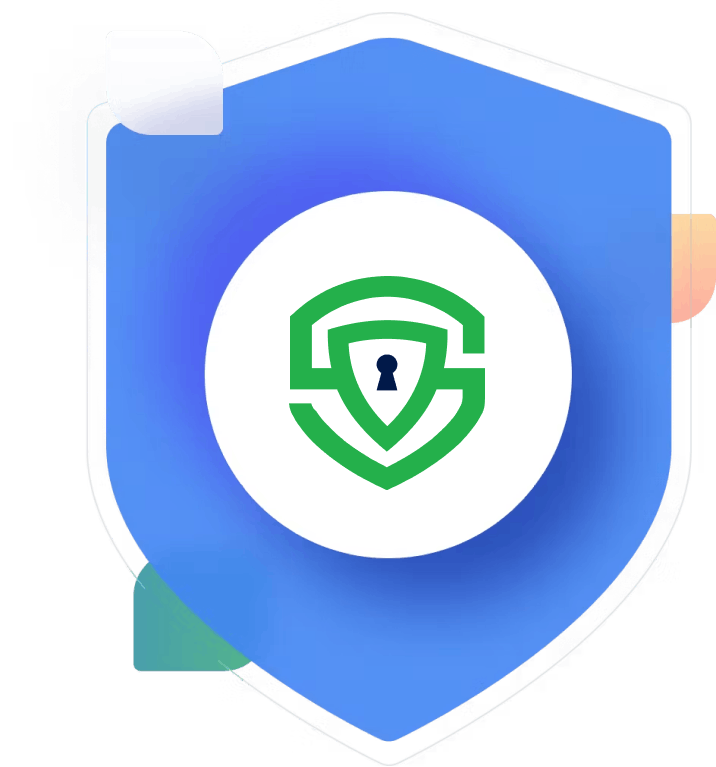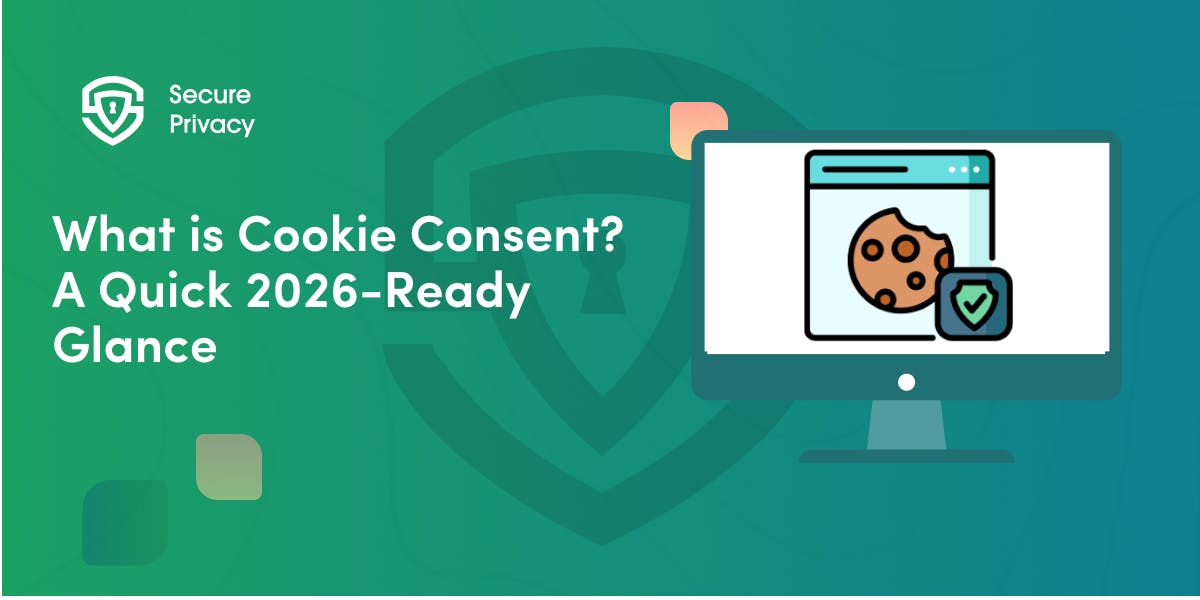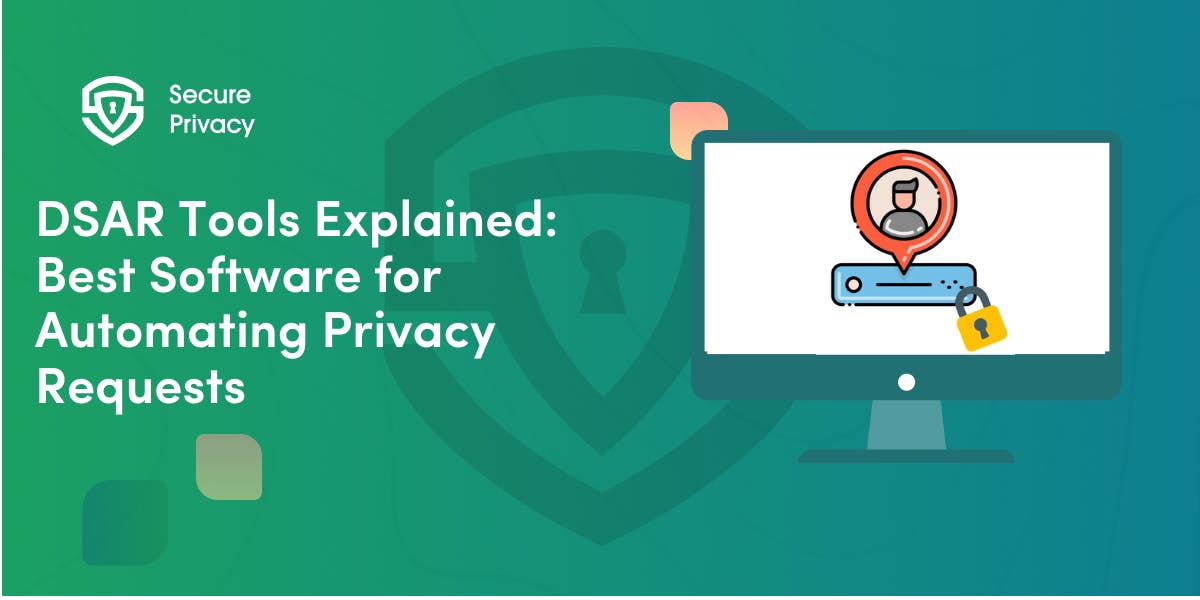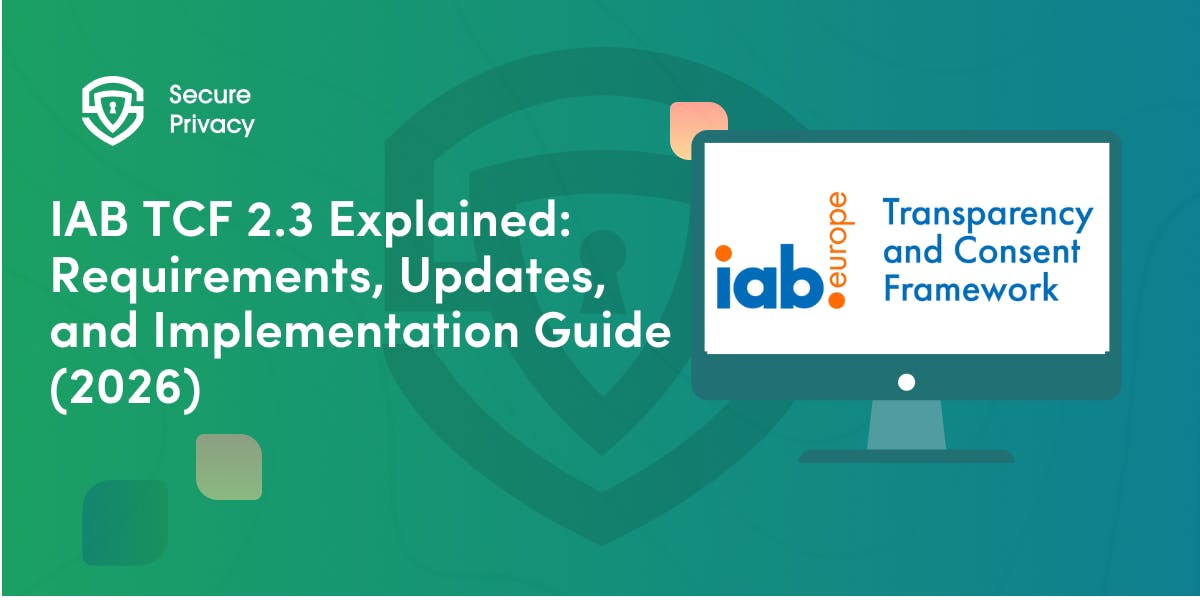Vendor Privacy Agreement Tracker for Schools: Ensuring FERPA, COPPA & GDPR Compliance
Your school district uses 150+ EdTech providers, but you can't answer basic questions: Which companies have signed FERPA agreements? When do privacy contracts expire? Are your third-party tools compliant with state privacy laws? Manual spreadsheets and scattered email chains leave massive compliance gaps that expose your district to regulatory violations and parent complaints.
A vendor privacy agreement tracker for schools transforms chaotic contract management into systematic compliance oversight that ensures every EdTech provider meets FERPA, COPPA, and state privacy requirements while providing the audit trails and transparency modern educational institutions need.
In this complete guide, you'll discover how specialized tracking platforms address education-specific compliance challenges, implement automated monitoring across your entire EdTech ecosystem, and provide the documentation and reporting capabilities essential for protecting student data in today's digital learning environment.

Prioritizing user privacy is essential. Secure Privacy's free Privacy by Design Checklist helps you integrate privacy considerations into your development and data management processes.
What Is a Privacy Agreement Tracking Platform?
A privacy agreement tracking platform for schools is a specialized software solution designed to help educational institutions systematically manage, monitor, and maintain compliance with privacy agreements across their digital ecosystem. Unlike general contract management systems, these platforms incorporate education-specific templates, FERPA compliance monitoring, and automated reporting tailored to school district governance requirements.
The system serves as a centralized repository for all provider privacy agreements while providing automated compliance monitoring, renewal alerts, risk assessment capabilities, and comprehensive audit trail documentation. Educational institutions face unique challenges managing third-party relationships due to strict student privacy requirements under FERPA, COPPA, and emerging state privacy laws.
These platforms typically include contract lifecycle management from initial evaluation through renewal and termination, automated compliance monitoring with real-time alerts for policy violations, FERPA-specific contract templates incorporating required privacy protections, risk assessment and categorization based on data access levels, and integration capabilities with existing school information systems and governance platforms.
The fundamental difference from standard contract management lies in educational privacy focus. Traditional business contract platforms don't understand FERPA requirements, COPPA compliance for younger students, or the unique risk profiles of educational technology providers accessing sensitive student information.
Why Schools Need Specialized Contract Tracking
Growing Complexity of EdTech Ecosystems
Modern school districts utilize an average of 200+ educational technology providers, ranging from learning management systems and student information platforms to specialized curriculum tools and administrative software. Each company potentially accesses different types of student data, creating complex compliance requirements that vary based on data sensitivity and student age demographics.
The COVID-19 pandemic accelerated EdTech adoption, with many districts rapidly implementing new tools without comprehensive privacy vetting. This expansion created provider sprawl where individual teachers and departments independently adopted tools without central oversight, making comprehensive privacy compliance tracking nearly impossible through manual methods.
State privacy legislation continues expanding, with laws like California's Student Privacy Acts, New York's Education Law 2-d, and emerging privacy frameworks in other states creating additional compliance layers beyond federal FERPA and COPPA requirements. Districts must now track compliance across multiple regulatory frameworks simultaneously.
Legal Requirements Under FERPA and COPPA
FERPA requires districts to maintain "reasonable methods" for protecting student educational records, which includes proper oversight and compliance monitoring. The regulation mandates that districts ensure providers use educational records only for authorized purposes and implement appropriate security measures to protect student privacy.
Schools must document that providers understand FERPA requirements, have signed appropriate data processing agreements, implement adequate security controls for student information, provide required breach notification procedures, and maintain proper data retention and deletion policies. This documentation requirement makes manual tracking insufficient for regulatory compliance.
COPPA adds additional complexity for districts serving students under 13, requiring verifiable parental consent for data collection, specific compliance with children's privacy protections, enhanced security measures for young children's information, and detailed record-keeping for FTC audit purposes.
Accountability to Stakeholders
Parents increasingly demand transparency about how schools protect their children's data and which companies have access to student information. School boards require regular reporting on compliance status, privacy risk assessments, and incident response capabilities to fulfill their governance responsibilities.
State education departments and federal regulators conduct compliance audits that require comprehensive documentation of privacy practices. Districts without systematic tracking face significant challenges producing required evidence during regulatory examinations.
Community trust depends on demonstrable privacy protection measures. High-profile data breaches and privacy violations by educational providers have increased public scrutiny of school privacy practices, making systematic management essential for maintaining community confidence.
Key Features of Education Tracking Platforms
Centralized Agreement Repository
Modern platforms provide secure, searchable repositories for all privacy agreements with version control, digital signature management, automated backup and recovery systems, and role-based access controls. This centralization eliminates the scattered document management that characterizes manual tracking approaches.
The document repository typically includes data processing agreements (DPAs) with detailed privacy terms, business associate agreements (BAAs) for HIPAA-covered health information, security addendums specifying technical safeguards, incident response procedures and notification requirements, and data retention and deletion policies with specific timelines.
Advanced platforms integrate with popular document management systems like Google Workspace, Microsoft 365, and specialized education platforms, enabling seamless workflow integration without disrupting existing processes.
Automated Compliance Monitoring
Sophisticated monitoring capabilities track compliance against contractual obligations, automatically flagging potential violations, policy changes, or approaching renewal deadlines. This automation reduces the manual oversight burden while improving compliance accuracy.
Monitoring features include real-time alerts for contract expirations and renewal deadlines, automated tracking of policy updates and privacy practice changes, systematic monitoring of security incident reports, and compliance scoring based on performance against contractual obligations.
The system can integrate with security assessment platforms, automatically importing security ratings and compliance certifications to maintain current risk profiles without manual data entry.
FERPA-Specific Compliance Templates
Educational platforms include pre-configured templates that incorporate the essential components required for FERPA-compliant contracts. These templates ensure consistent privacy protections across all relationships while reducing legal review requirements for standard agreements.
Standard template components include definition of educational records scope and access limitations, data ownership and control provisions clearly establishing district rights, authorized use restrictions preventing unauthorized data processing, non-disclosure requirements protecting student information confidentiality, breach notification procedures with specific timelines and requirements, and secure data destruction protocols ensuring proper information disposal.
Templates adapt to different categories, with distinct requirements for high-risk providers accessing comprehensive student records versus low-risk companies with limited data access.
Risk Assessment and Categorization
Systematic risk assessment capabilities evaluate providers based on data access scope, security practices, compliance history, and incident response capabilities. This assessment enables risk-based management that allocates oversight resources appropriately.
Risk factors typically include types and volume of student data accessed, security certification status and audit results, compliance history with educational privacy requirements, incident response capabilities and historical performance, and international data transfer arrangements requiring additional safeguards.
Automated scoring systems provide objective risk ratings that support selection decisions, contract negotiation priorities, and ongoing monitoring intensity levels.
Integration with Educational Systems
Modern platforms integrate with school information systems (SIS), learning management systems (LMS), and other educational technology platforms to provide comprehensive visibility into data access and usage patterns.
Integration capabilities include automated discovery of connections and data flows, real-time monitoring of data access patterns and usage volumes, correlation of activities with privacy compliance requirements, and automated generation of data processing records for regulatory compliance.
These integrations provide the comprehensive view necessary for effective privacy management while reducing manual data collection and analysis requirements.
SOC 2 Compliance and Certification
SOC 2 (System and Organization Controls 2) is an auditing framework developed by the American Institute of Certified Public Accountants (AICPA) that evaluates how service organizations protect customer data. Unlike prescriptive standards that dictate specific security measures, SOC 2 is flexible — allowing organizations to design controls that fit their specific services while meeting rigorous criteria for data protection.
Implementation Best Practices for Schools
Comprehensive Vendor Inventory
Successful implementation begins with comprehensive mapping of all current relationships, including formal contracts, informal tool usage, and department-specific technology adoptions. This inventory process often reveals significantly more relationships than districts initially recognize.
The inventory should include primary learning and administrative platforms with extensive student data access, specialized curriculum and assessment tools with moderate data access, communication and collaboration platforms with limited data access, and individual teacher or classroom tools with minimal data access.
Documentation for each vendor should include contract status and renewal dates, types of student data accessed, security measures and compliance certifications, incident history and compliance performance, and integration with other district systems and platforms.
Role Assignment and Governance
Effective vendor privacy management requires clear role assignment across district leadership, IT departments, legal counsel, and educational staff. The governance structure should align with district organizational capabilities while ensuring comprehensive oversight.
Typical role assignments include district privacy officer or designee managing overall vendor compliance strategy, IT department handling technical assessments and system integrations, legal counsel reviewing contract terms and compliance requirements, and department heads ensuring vendor usage aligns with educational purposes and privacy policies.
Clear escalation procedures ensure that privacy concerns, compliance violations, or security incidents receive appropriate attention and resolution within established timeframes.
Automated Alert Configuration
Strategic alert configuration ensures that critical compliance deadlines, policy changes, and potential violations receive timely attention without overwhelming staff with unnecessary notifications.
Essential alerts include contract renewal deadlines with sufficient lead time for renegotiation, vendor policy changes that might affect privacy compliance, security incident reports requiring district response, and compliance score changes indicating potential risk increases.
Alert prioritization ensures that high-risk vendors and critical compliance issues receive immediate attention while routine matters follow standard review processes.
Ongoing Monitoring and Review
Systematic monitoring procedures ensure that vendor compliance remains current and effective over time. Regular review cycles should align with district governance requirements and regulatory expectations.
Monthly monitoring typically includes vendor compliance status review and issue identification, security incident analysis and response evaluation, and performance metrics analysis for continuous improvement. Quarterly reviews involve comprehensive vendor risk assessment updates, contract performance evaluation against established criteria, and strategic planning for vendor relationship optimization.
Annual assessments provide comprehensive evaluation of overall vendor privacy program effectiveness, regulatory compliance status across all applicable frameworks, and strategic recommendations for program enhancement and risk mitigation.
Benefits of Automated Vendor Tracking
Risk Reduction and Compliance Assurance
Systematic vendor tracking dramatically reduces privacy compliance risk by ensuring comprehensive oversight of all vendor relationships and consistent application of privacy protection requirements. Districts using automated tracking report significant reductions in compliance gaps and regulatory concerns.
Automated systems help prevent costly privacy violations through proactive monitoring and alert systems that identify potential issues before they escalate to regulatory violations. The comprehensive documentation also supports legal defense strategies during investigations or audits.
Regular compliance monitoring ensures that vendors maintain agreed-upon privacy practices throughout the contract lifecycle, reducing the risk of privacy violations due to vendor policy changes or security incidents.
Operational Efficiency Gains
Automated tracking eliminates time-consuming manual processes while improving accuracy and consistency of vendor privacy management. Districts report significant staff time savings that can be redirected to educational priorities.
Centralized vendor systems reduce duplicate vendor assessments across departments, streamline contract renewal processes through automated workflows, enable rapid response to vendor privacy incidents, and provide immediate access to vendor information for decision-making purposes.
Standardized processes ensure consistent vendor evaluation criteria and contract terms across all district departments, reducing confusion and improving compliance outcomes.
Enhanced Transparency and Accountability
Automated systems provide comprehensive reporting capabilities that support transparency requirements from parents, school boards, and regulatory authorities. Real-time dashboards enable immediate visibility into vendor compliance status across the entire district.
Board reporting becomes streamlined through automated generation of compliance summaries, risk assessments, and vendor performance metrics. Parent inquiries about vendor privacy practices can be addressed quickly and accurately using current system data.
Regulatory audit preparation becomes significantly more efficient when comprehensive vendor documentation and compliance evidence are immediately accessible through automated systems.
Evaluation Criteria for School Districts
Education-Specific Functionality
Districts should prioritize platforms designed specifically for educational privacy requirements rather than generic contract management systems. Education-focused platforms understand FERPA, COPPA, and state privacy law requirements built into their core functionality.
Essential education features include pre-configured FERPA compliance templates and workflows, COPPA-specific requirements for districts serving younger students, integration with common educational technology platforms, and reporting capabilities aligned with school governance requirements.
The platform should demonstrate understanding of educational vendor categories and risk profiles rather than applying generic business risk assessments that may not align with student privacy protection priorities.
Integration and Scalability
Effective platforms integrate seamlessly with existing district technology infrastructure without requiring wholesale system replacements. Integration capabilities should include school information systems, learning management platforms, identity management systems, and existing document repositories.
Scalability considerations include ability to handle district growth and vendor expansion, support for multi-school district organizational structures, accommodation of varying compliance requirements across different schools, and flexibility to adapt to changing regulatory requirements.
The platform should support both current district needs and anticipated future growth without requiring complete system migrations or significant additional investments.
Support and Training Resources
Implementation success depends significantly on vendor support quality and training resources. Districts should evaluate ongoing support availability, training program comprehensiveness, and user community resources.
Support evaluation should include implementation assistance and change management support, ongoing technical support with education-specific expertise, regular platform updates and regulatory guidance, and user training programs tailored to educational staff roles.
Strong vendor partnerships include regular platform updates addressing changing educational privacy requirements, proactive communication about regulatory developments, and community resources for sharing best practices among educational users.
How Secure Privacy Delivers Vendor Management Excellence for Education
Educational institutions choose Secure Privacy for comprehensive vendor privacy agreement tracking that understands the unique challenges of protecting student data while enabling innovative educational technology. Our platform combines deep educational domain expertise with robust privacy management designed specifically for K-12 districts, universities, and educational service providers.
Our vendor tracking solution provides industry-leading education templates covering FERPA, COPPA, and state privacy requirements with automated monitoring capabilities that ensure continuous compliance across your entire EdTech ecosystem. Unlike generic contract platforms, Secure Privacy offers purpose-built workflows that align with educational governance structures and student privacy protection priorities.
The platform's advanced analytics provide real-time visibility into vendor compliance status, automated risk assessments, and comprehensive audit trails that satisfy regulatory requirements while supporting transparent communication with parents, school boards, and education officials.
Frequently Asked Questions
How many vendors does a typical school district need to track?
Most K-12 districts actively use between 100-300 educational technology vendors, with larger districts potentially managing 500+ vendor relationships. This includes everything from major platforms like Google Workspace and learning management systems to specialized curriculum tools and individual classroom applications that teachers adopt independently.
What's the difference between a DPA and a BAA in educational vendor contracts? A Data Processing Agreement (DPA) covers general student data privacy requirements under FERPA and state laws, while a Business Associate Agreement (BAA) specifically addresses health information protection under HIPAA. Schools often need both when vendors access both educational records and student health information.
How often should we review vendor privacy agreements?
Annual reviews are recommended for all vendors, with quarterly reviews for high-risk vendors accessing comprehensive student data. Additionally, reviews should be triggered by vendor policy changes, security incidents, regulatory updates, or significant changes in data processing activities.
Can we use the same privacy agreement template for all vendors?
While base templates provide consistency, agreements should be customized based on vendor risk levels and data access scope. High-risk vendors require more stringent privacy protections and monitoring requirements than vendors with limited data access.
What happens when a vendor fails to meet privacy compliance requirements?
Non-compliance should trigger immediate investigation and remediation efforts. Depending on severity, responses may include additional monitoring, contract modifications, data access restrictions, or contract termination for vendors unable to meet student privacy protection requirements.
How do we handle vendors that operate internationally?
International vendors require additional privacy safeguards, including adequacy decisions for data transfers, standard contractual clauses for privacy protection, clear data residency requirements, and enhanced monitoring for compliance with both US and international privacy laws.
What documentation do we need for regulatory audits?
Comprehensive audit documentation should include all signed vendor privacy agreements, vendor risk assessments and compliance monitoring records, incident response documentation and vendor notification records, training records for staff managing vendor relationships, and evidence of ongoing compliance monitoring and review processes.
How do we balance innovation with privacy protection in vendor selection?
Effective vendor management enables innovation by streamlining privacy compliance processes rather than blocking technology adoption. Automated tracking systems can accelerate vendor approval while ensuring comprehensive privacy protection through systematic evaluation and monitoring procedures.
Transform your district's approach to vendor privacy management with automated tracking designed for educational institutions. Schedule a demonstration to see how systematic vendor management can enhance both privacy compliance and educational innovation.
Get Started For Free with the
#1 Cookie Consent Platform.
No credit card required

What is Cookie Consent? A Quick 2026-Ready Glance
Your website loads. Cookies track users. But without proper cookie consent, you're violating GDPR — risking fines up to €20 million or 4% of global revenue. Cookie consent is the legally required mechanism by which websites obtain explicit user approval before deploying non-essential tracking technologies. This requirement stems from GDPR Article 4(11) and the ePrivacy Directive, mandating that consent must be freely given, specific, informed, and unambiguous.
- Legal & News

DSAR Tools Explained: Best Software for Automating Privacy Requests
You're drowning in data subject access requests. Manual searches through dozens of systems miss regulatory deadlines and expose organizations to fines starting at $2,500 per violation. The solution? DSAR tools — purpose-built software that automates the entire process of responding to data subject access requests, from intake to delivery.
- Legal & News

IAB TCF 2.3 Explained: Requirements, Updates, and Implementation Guide (2026)
Your ad revenue dropped 40% overnight. Google stopped bidding on your inventory. Your DSP partners flagged your traffic as non-compliant. The culprit? An outdated TCF 2.2 consent string after the February 2026 enforcement deadline.
- Legal & News
- Cookie Consent
